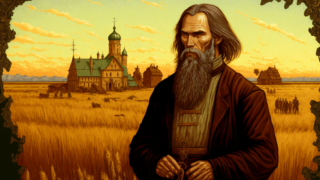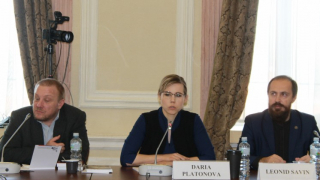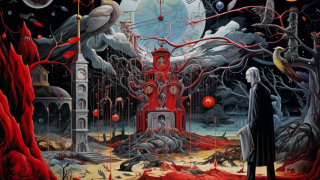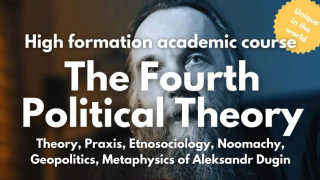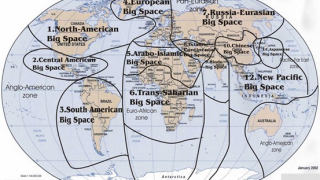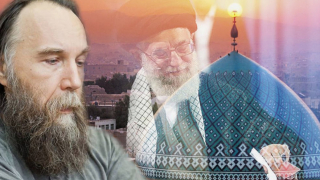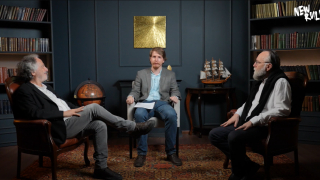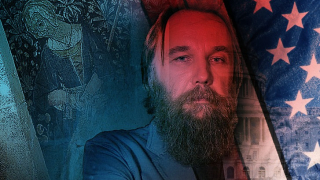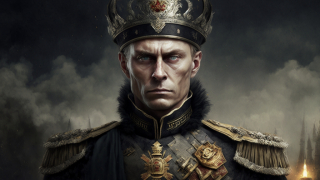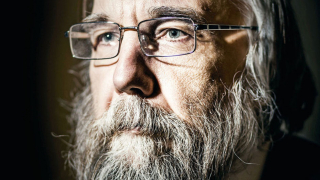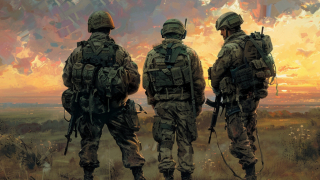The Russian World and its Cathedral
On the threshold of the jubilee congress of the World Russian People’s Council in the Kremlin, which is dedicated to the Russian World, it is necessary to address the very concept of “Russian World” in a little more detail.
The very combination of the Russian World caused a lot of controversy and heated politics. Everyone tried to interpret it arbitrarily, and depending on the position of individual authors changed the very meaning. Some turned it into a caricature, others, on the contrary, glorified it in every possible way, but often to the detriment of the content.
First of all, the most important distinction should be made: the Russian World does not mean the same thing as the Russian Federation as a nation-state. This is probably recognized by everyone. But some believe that the Russian World is broader and larger than Russia, others that it is narrower and more localized, while others place it in a somewhat intermediate position.
In the first case, and this is the most correct and meaningful use of the term “Russian World,” we are talking about Russia as a civilization. And it is in this sense that it is understood by the World Russian People’s Council, as an association of all people who consider the Russian civilization as their own—regardless of where they live and what state they are citizens of. In this case, the Russian World coincides with the Russian civilization, but this in turn does not exclude other peoples united with the Russians by the community of destiny, but includes them. Hence the closeness of the concept of the Russian World to Russia-Eurasia, as Eurasian philosophers understood it. It is not just a country, a state, but the whole world, a flowering of ethnicities and cultures, a spiritual historical cosmos, united for centuries around the core of the Russian people. To be part of the Russian World in this understanding means to share the spirit and culture, manifested in all its splendor in multidimensional and multipolar forms of historical creation, encompassing politics, economics, art, industry, ethics.
In this understanding, the Russian World is inextricably linked to the Orthodox Church, but by no means to the detriment of other traditional faiths. Here again we see a direct connection with the World Russian People’s Council, whose head is His Holiness Patriarch Kirill of All Russia, but in which the heads of the main confessions of Russia invariably participate.
Of course, the basis of the Russian World is Russia as a state, and this is clearly seen in the fact that the President of the Russian Federation himself takes part in the most significant events of the All-Russian People’s Congress, turning in fact such solemn national and all-voluntary meetings into a kind of analog of the Zemsky Sobor. But the Russian World is wider than just the state, and the Russian people is bigger than the totality of Russian citizens. In this sense, the Russian World is formed around Russia, and its President and the First Hierarch of the Russian Orthodox Church are symbols and axes of the entire civilization, a magnet of attraction and the core of a complex and non-linear community of peoples, cultures, and individual citizens.
It is worth mentioning two other—not true, but quite common—interpretations of the Russian World, because any concept acquires its true meaning when it is compared with what it should not be understood as.
Thus, under the Russian World in no circumstance can be understood only the totality of ethnic Great Russians, i.e., Eastern Slavs, concentrated historically in the eastern regions of Ancient Russia, where Vladimir, later Muscovite Rus’ was formed and where at some point was moved the capital together with the Grand-Ducal throne and metropolitan cathedra. Such interpretation completely distorts the initial sense, excluding from the Russian World both western Russians (Belarusians and Malorussians), and all non-Slavic ethnoses of Russia itself. Strictly speaking, practically nobody understands the Russian World in this way, but its opponents, on the contrary, try to artificially distort the meaning and endow this expression with a completely inappropriate meaning. Therefore, it will not be superfluous to emphasize once again that under the “Russian World” are understood all Eastern Slavs (and therefore, not only Great Russians, but also Belarusians and Malorussians), as well as all other ethnic groups that have linked their fate at one stage or another with the Russian people. Therefore, the Russian World can include, for example, Georgians, Armenians or Azerbaijanis, who, although they are currently outside Russia, retain their belief in historical closeness and spiritual kinship with Russians.
Here, however, the main thing is not whether these or those ethnic groups consider themselves part of the Russian World, it can change and depend on many factors, including some may consider themselves part of it, and some may not, and others do not consider themselves part of it now, but tomorrow they will. The main thing is that the Russian World itself is always open to brotherly peoples. It is important that Russians themselves are ready to consider as part of the Russian World those who want it, strive for it and share with us our common destiny. And this openness does not depend on the historical moment or historical mood. When we talk about the Russian World, this openness is a fundamental axiom. Without it, the Russian World is not valid. This is its semantic deep axis. The Russian World does not exclude, but only includes. We can call it by the Western term “inclusiveness,” but only we are talking about a special inclusiveness—about Russian inclusiveness, and in fact, about Russian love, without which there is no Russian person.
Therefore, the Russian World can in no way be narrower than Russia, but only wider.
And finally, it would be wrong to identify the Russian World with the three branches of the East Slavic tribe, that is, only with the Great Russians, Belarusians and Malorussians. Yes, we three East Slavic peoples make up the core of the Russian World. But it does not mean that other non-Slavic peoples are not its organic and integral part.
Thus, having fixed the correct interpretation of the Russian World, and having rejected the wrong ones, we can continue thinking about it.
The question immediately arises: what are the boundaries of the Russian World? After we have defined it, it becomes clear that these borders can be neither ethnic, nor state, nor confessional. These are the boundaries of civilization, and they are not linear and strictly fixed. How can we place Spirit, culture, consciousness within strict physical boundaries? But at the same time, when we get too far away from the core of the Russian World, we cannot help but notice that at some point we find ourselves in a foreign territory, in the space of another civilization. For example, Western European, Islamic or Chinese. And it is not only the language, phenotype and mores of the local population that is important here. We have left the limits of the Russian World; civilization has crumpled, we are in a new cultural circle different from ours.
Darya Dugina drew attention to such a concept as “frontier.” It is not a linear border, but an intermediate strip, a no-man’s or neutral territory that separates one civilization from another. The property of the frontier is to change constantly, shifting in one direction or another. Moreover, the frontier has a life of its own; its territory is a place of intense exchange of cultural codes, where two or even more identities converge, conflict, diverge and enter into dialogue again. Darya experienced the frontier in Novorossiya, while traveling through the new territories. She shrewdly captured the very life of this area, where the fate of the Russian World is being decided today. Undoubtedly, Ukraine, Malorossiya belongs to the Russian World. Historically, it is its cradle. But later, as the center shifted to the east, it itself turned into a civilizational frontier, became an intermediate zone between Eurasian Russia and Europe. Hence the intersection of influences—in language (influence of Polish), religion (influence of Catholicism), culture (influence of liberalism and nationalism, deeply alien to the Russian code). Thus, the Ukrainian frontier in turn became an area of tension between two centers, poles of attraction—between the Russian World and the European West. This was clearly seen in the electoral politics of Ukraine (while there were still elections there), and led to a terrible fratricidal war.
Another example of the borders of the Russian World is brotherly Belarus. Its people were also separated from us, the Great Russians, for a while, and became part of first the Grand Duchy of Lithuania, then the Polish state. With all the originality and authenticity of the established Belarusian identity, peculiarities of language and culture, this frontier was not divided into two poles of attraction. With full sovereignty and independence, Belarus is an organic and integral part of the Russian World, remaining quite an independent state.
Thus, the Russian World does not necessarily mean either absorption, or war, or the presence or absence of state borders. If the Ukrainian frontier would behave the same way as the Belarusian frontier, no one would attack the territorial integrity of Ukraine. The Russian World is open and peaceful, ready for friendship and partnership on various grounds. But it cannot respond to acts of direct aggression, humiliation and Russophobia.
President Putin once answered the question where Russia ends, and in this case “Russia” meant the Russian World: there, where a Russian person can reach, where we will be forced to stop. And it is quite obvious that we will not stop before we restore the integrality of our “Russian world” lands; the natural contours and harmonious (albeit complex) fronts of our civilization.
The Russian World is based on the Russian Idea. And this Idea, of course, has its own peculiar unique features. Its construction is determined by traditional values, absorbing the historical experience of the people. The Idea cannot be invented or developed, it grows from the depths of our social consciousness, matures in the people’s depths, seeks an outlet in the insights and masterpieces of geniuses, military leaders, rulers, saints, ascetics, laborers, simple families. The Russian Idea applies to everyone:
- Russian families who answer its call with fertility and creative labor;
- our army that defends the frontiers of the Fatherland at the cost of their lives;
- the state apparatus, which is called upon to serve the country on the basis of ethics and loyalty;
- the clergy, not only praying incessantly for prosperity and victory, but also tirelessly enlightening the people and educating them in the foundations of Christian morality;
- the rulers who are called to lead the state to glory, prosperity and greatness.
The Russian World is that ideal which is always above us, forming a horizon of dreams, aspiration and will.
And finally, what does the Russian World mean in International Relations? Here this concept acquires even more significant weight. The Russian World is one of the poles of the multipolar world. It can be united into a state (like China or India), or represent several independent states, united by history, culture and values (like the countries of the Islamic world). But in any case, it is a State-Civilization with its own original and distinctive identity. The multipolar world order is built on the dialogue of such “worlds,” State-Civilizations. And the West in this context should no longer be perceived as a bearer of universal values and norms, universally binding for all peoples and states of the world. The West, NATO countries are one of the worlds along with others, one State-Civilization among others—Russia, China, India, Islamic bloc, Africa and Latin America. The universal world is made up of a set of separate poles—large spaces, civilizations and fronts, separating and connecting them simultaneously. It is a delicate construction that requires delicacy, subtlety, mutual respect, tact, familiarity with the values of the Other, but only there can a truly just world order be built. And in this world order it is the Russian World, and not only Russia as a state, that is a full-fledged pole, the center of integration, a unique civilizational entity, based on its own traditional values, which may partly coincide and partly differ from the values of other civilizations. And no one can tell from the outside what to be and what not to be for the Russian World. It is decided only by its peoples, its history, its Spirit, its path in history.
All these are the main topics of the World Russian People’s Council dedicated to the Russian World.



